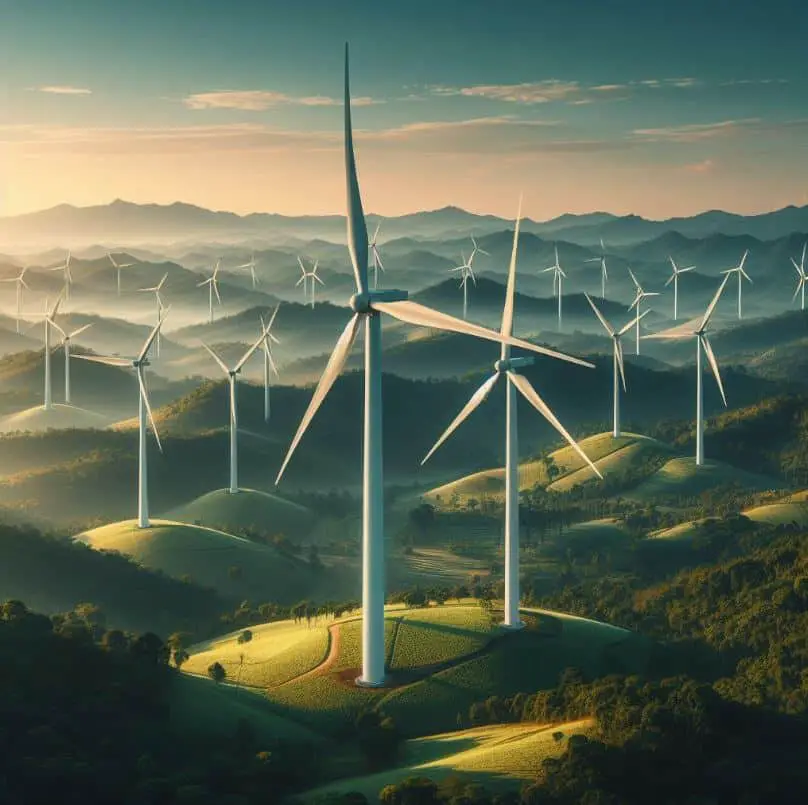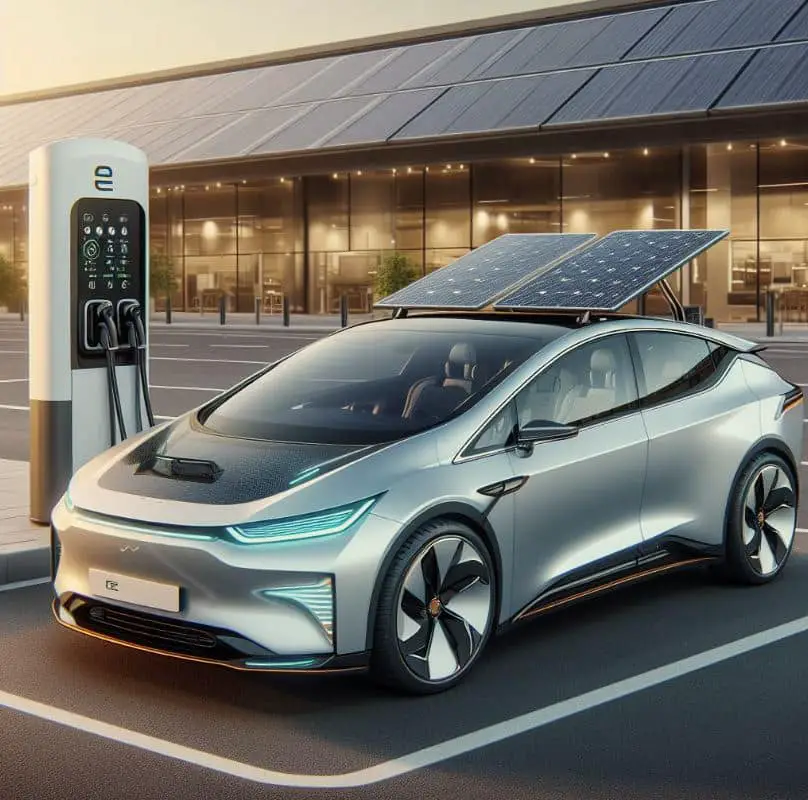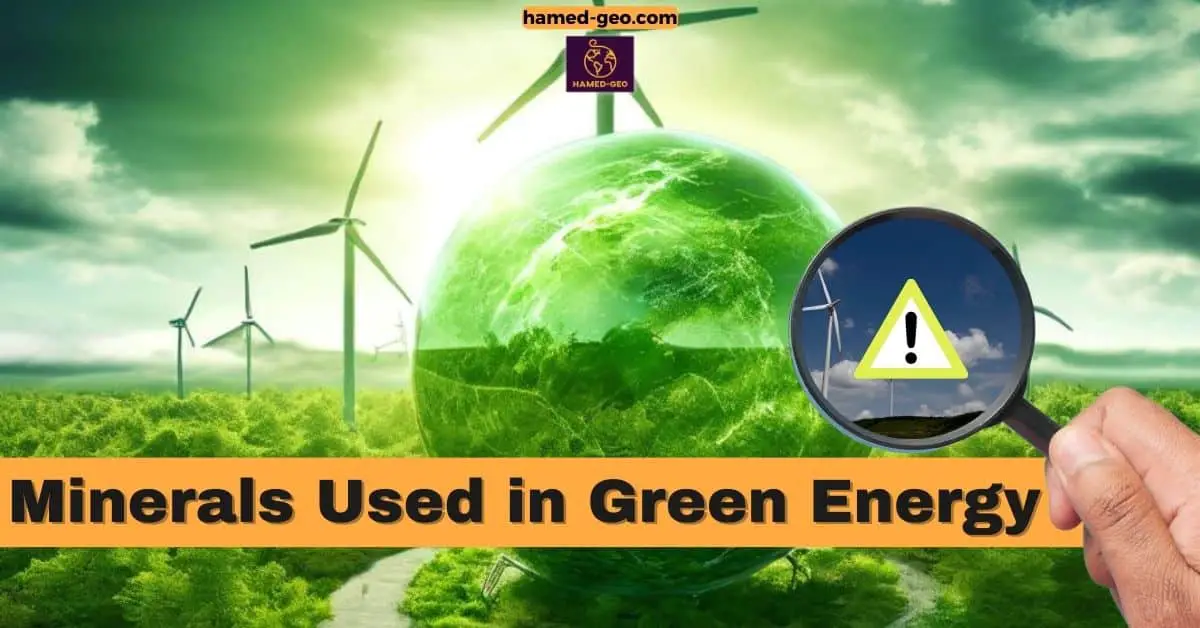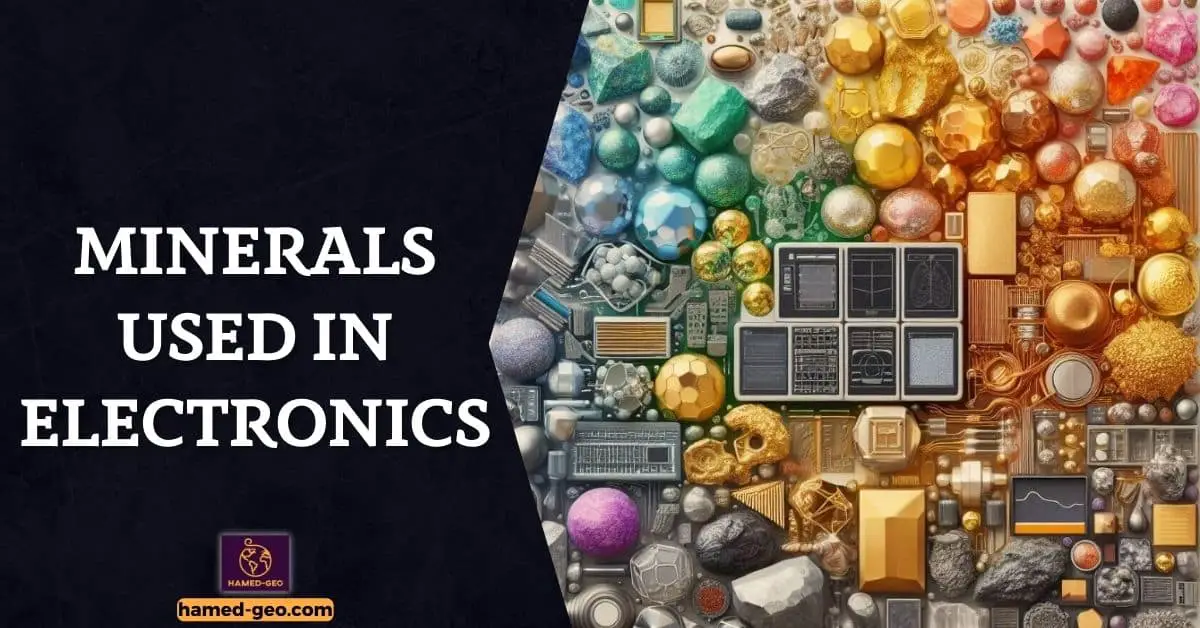Minerals used in green energy have become a critical component in the transition towards more sustainable and environmentally friendly energy sources. As the global demand for renewable energy continues to rise, the need for these essential minerals has also increased. Minerals such as lithium, cobalt, and rare earth elements are crucial in the production of batteries for electric vehicles, solar panels, and wind turbines. The extraction, processing, and use of these minerals present both opportunities and challenges for the green energy sector.
The use of minerals in green energy has sparked significant interest and concern due to their limited availability, potential environmental impacts, and geopolitical implications. The global supply chain for these minerals is often concentrated in a few countries, leading to concerns about supply security and price volatility. Additionally, the extraction and processing of these minerals can have negative environmental and social consequences if not managed responsibly. Despite these challenges, the development and deployment of green energy technologies heavily rely on these minerals, highlighting the need for sustainable and ethical practices in their production and use.
Rare Earth Minerals
The uses of rare earth minerals in wind turbines highlight their critical role in renewable energy production. These minerals are essential for the production of powerful and efficient magnets used in the turbines, contributing to the global shift towards sustainable energy sources. However, the sources of rare earth minerals are limited, with China being the largest producer, raising concerns about supply chain security. The environmental impact of mining rare earth minerals is also a significant issue, as the extraction process can result in pollution and habitat destruction. Balancing the demand for these minerals with their environmental impact remains a key challenge in the renewable energy sector.
Uses in Wind Turbines

Transitioning from the discussion of rare earth minerals, it is important to highlight their significant role in the production of wind turbines. With the global shift towards renewable energy sources, wind turbines have become an essential component in generating clean electricity. The magnets used in wind turbines, particularly in direct-drive generators, rely heavily on rare earth minerals such as neodymium, praseodymium, and dysprosium. These minerals are crucial for enhancing the efficiency and power output of the turbines, making them an indispensable component of the renewable energy sector.
The use of rare earth minerals in wind turbines contributes to the reduction of greenhouse gas emissions and dependence on fossil fuels. According to the International Energy Agency, wind energy capacity is expected to grow significantly in the coming years, further driving the demand for rare earth minerals. As such, it is imperative to explore sustainable and responsible sourcing practices to meet the growing demand for these critical minerals.
Sources of Rare Earth Minerals
With the increasing demand for rare earth minerals in various industries, the search for new sources has become a priority. One of the main challenges in the search for rare earth minerals is their scarcity and the limited number of locations where they can be found. Currently, the primary sources of rare earth minerals include China, Australia, the United States, and several other countries. China is the leading producer of rare earth minerals and holds a significant share of the global market. Australia also has substantial reserves of rare earth minerals and is actively working to increase its production. In the United States, rare earth minerals are primarily mined in California, Colorado, and Texas. Additionally, ongoing exploration efforts in other parts of the world, such as Africa and South America, aim to identify new sources of rare earth minerals to meet the growing demand. Diversifying the sources of rare earth minerals is crucial to ensure a stable supply for various industries.
Lithium
The importance of lithium in electric vehicle batteries has significantly increased its demand in recent years. This has led to a surge in lithium mining activities, particularly in regions rich in lithium reserves such as Australia, Chile, and Argentina. The environmental impact of lithium mining is a growing concern, with issues related to water usage, soil contamination, and habitat destruction. As the demand for lithium continues to rise, it is crucial to explore sustainable mining practices and alternative sources of lithium to mitigate its environmental impact.
Uses in Electric Vehicle Batteries
Rare Earth Minerals are crucial for the production of various high-tech products, including electric vehicle batteries. Lithium is a key component in the rechargeable batteries used in electric vehicles, making it an essential mineral for the advancement of sustainable transportation. The high energy density and lightweight properties of lithium-ion batteries make them ideal for powering electric vehicles, providing a longer driving range and faster charging times compared to traditional lead-acid batteries.
Lithium batteries are also preferred for their durability and reliability, allowing electric vehicles to maintain their performance over an extended period. As the demand for electric vehicles continues to grow, so does the need for lithium to power these vehicles. With the global push towards reducing greenhouse gas emissions, the role of lithium in electric vehicle batteries becomes increasingly significant in achieving a more sustainable transportation sector.
Sources of Lithium
Lithium, a key component in electric vehicle batteries, is primarily sourced from two main types of deposits: lithium brine and lithium hard rock. Lithium brine is extracted from saltwater and is found in countries such as Chile, Argentina, and Bolivia, where vast salt flats hold high concentrations of lithium. On the other hand, lithium hard rock is mined from mineral ore deposits, with the largest reserves located in Australia, China, and the United States.
The extraction of lithium from these sources involves various processes such as pumping brine from underground reservoirs, evaporating the water to concentrate the lithium, and extracting lithium from the mineral ore through chemical processes. The environmental impact of lithium extraction varies depending on the source. While lithium brine extraction can have lower carbon emissions and water usage compared to hard rock mining, it can lead to water scarcity and soil contamination if not managed properly.
Overall, the increasing demand for lithium in electric vehicle batteries has sparked concerns about the environmental impact of sourcing this critical mineral.
Cobalt
Cobalt plays a critical role in the production of electric vehicle batteries, contributing to the advancement of sustainable transportation. The primary sources of cobalt are the Democratic Republic of Congo, Russia, and Australia, with the DRC being the largest producer. However, the environmental impact of cobalt mining has raised concerns due to issues such as water pollution and deforestation. The use of cobalt in batteries is driving demand, prompting efforts to explore more sustainable sources and recycling methods. Balancing the need for cobalt with its environmental impact is crucial for the future of electric vehicles and renewable energy technology.
Uses in Electric Vehicle Batteries

Transitioning from the discussion of lithium, cobalt is another essential component in the production of electric vehicle batteries. The use of cobalt in these batteries is crucial for their performance and longevity.
Cobalt is utilized in electric vehicle batteries to improve their stability and energy density. The addition of cobalt helps to enhance the overall performance and lifespan of the battery, making it a key component in the production of high-quality batteries for electric vehicles. The use of cobalt in these batteries allows for increased energy storage capacity, which is essential for the long-term viability of electric vehicles as a sustainable transportation option. Additionally, cobalt plays a role in enhancing the safety and reliability of electric vehicle batteries, making them a more viable option for widespread use.
The incorporation of cobalt in electric vehicle batteries is a critical factor in the advancement of electric vehicle technology, as it contributes to the overall efficiency and effectiveness of these vehicles. As the demand for electric vehicles continues to rise, the importance of cobalt in the production of high-performance batteries cannot be overstated.
Sources of Cobalt
Used primarily in electric vehicle (EV) batteries, cobalt is an essential component in the production of lithium-ion batteries. The main sources of cobalt are the Democratic Republic of Congo (DRC), with more than 60% of the world’s cobalt supply coming from this region. The DRC’s cobalt production is often associated with environmental and ethical concerns, including issues related to child labor, unsafe working conditions, and environmental degradation. Additionally, cobalt is also sourced from other countries such as Russia, Australia, and Canada.
In recent years, there has been a push for more responsible sourcing of cobalt, with initiatives such as the Responsible Cobalt Initiative (RCI) and the Responsible Sourcing Network (RSN) working to address the environmental and social issues linked to cobalt mining. Furthermore, efforts have been made by major battery manufacturers and EV companies to trace the origin of cobalt used in their products to ensure it comes from ethical and sustainable sources.
Copper
The production of electrical wiring, motors, and generators for renewable energy systems heavily relies on the use of copper due to its excellent electrical conductivity and durability. This demand has led to an increased need for copper mining, resulting in various environmental impacts. The primary sources of copper are found in Chile, Peru, and China, with significant reserves also present in the United States and Australia. As the demand for copper continues to grow, it is crucial to consider the environmental consequences of mining and explore sustainable mining practices to mitigate its impact on the environment.
Production of Electrical Wiring, Motors, and Generators for Many Renewable Energy Systems

Transitioning from the importance of cobalt in technology, it is essential to consider the production of electrical wiring, motors, and generators for many renewable energy systems. Copper is a crucial component in the production of these essential components for renewable energy systems. Copper is a highly conductive metal, making it an ideal material for conducting electricity. This makes it an essential element in the production of electrical wiring, motors, and generators used in renewable energy systems such as solar panels, wind turbines, and hydroelectric power plants. The versatility and conductivity of copper make it an essential material for the efficient production of renewable energy.
The production of these components requires a significant amount of copper, and as the demand for renewable energy systems continues to grow, so does the demand for copper. This has led to an increase in copper mining activities to meet the growing demand for renewable energy technology.
Sources of Copper
Moving on to Copper, a vital component in the production of electrical wiring, motors, and generators for many renewable energy systems. The sources of Copper are diverse, including primary ores such as chalcopyrite, bornite, and chalcocite. These ores are typically mined in large open-pit or underground operations, with the leading Copper-producing countries being Chile, Peru, and China. In addition to primary ores, Copper can also be extracted from secondary sources such as recycled materials, including old scrap and new scrap. The recycling of Copper plays a significant role in the sustainable management of this valuable resource, reducing the need for new mining and the associated environmental impacts. However, it is important to note that the demand for Copper continues to rise, driven by the increasing adoption of renewable energy technologies, which may necessitate a continued focus on responsible mining practices and recycling efforts to meet this demand in an environmentally sustainable manner.
Silicon
Silicon is used in the production of solar panels due to its semiconductor properties, making it an essential component of renewable energy technology. The sources of silicon include quartz, which is the most abundant mineral on earth, and sand. However, the primary source of silicon for industrial purposes is through the process of mining and refining quartz. The environmental impact of mining silicon can be significant, as it involves the extraction of large quantities of raw material, energy consumption, and waste generation. Sustainable mining practices and technological advancements are being developed to minimize the environmental impact of silicon production.
Used in the Production of Solar Panels

Silicon is a crucial component in the production of solar panels. It is the second most abundant element in the Earth’s crust, making it an ideal material for use in the renewable energy industry. The photovoltaic cells within solar panels are made from silicon wafers, which are capable of converting sunlight into electricity. The use of silicon in solar panels has become increasingly important as the demand for renewable energy sources continues to grow.
The process of producing silicon for solar panels involves extracting silicon dioxide from quartz and then reducing it to pure silicon. This process requires a significant amount of energy, but the resulting product is highly efficient in converting solar energy into electricity. As technology continues to advance, the efficiency and cost-effectiveness of silicon-based solar panels have improved, making them a popular choice for renewable energy generation.
In conclusion, the use of silicon in the production of solar panels plays a crucial role in advancing the renewable energy industry and reducing our reliance on fossil fuels.
Sources of Silicon
Now that we have discussed the importance of copper in various industries, let’s shift our focus to silicon, particularly its role in the production of solar panels.
Silicon is a crucial component in the manufacturing of solar panels, as it is used to create photovoltaic cells that convert sunlight into electricity. The demand for silicon in the solar industry has surged in recent years due to the growing emphasis on renewable energy sources.
The primary sources of silicon include quartz, which is the most abundant mineral on Earth, and sand. These raw materials undergo a series of processes to extract silicon in its pure form, which is then used in the production of solar panels.
Additionally, silicon can also be obtained from various silicate minerals, such as feldspar and mica. These sources contribute to the overall supply of silicon for the solar industry.
Understanding the sources of silicon is essential for assessing its availability and sustainability for the production of solar panels.
Silver
Silver is used in the production of solar panels as a conductive material, making it an essential component in the renewable energy industry. The sources of silver are primarily found in countries such as Mexico, Peru, and China, with mining being the main method of extraction. However, the environmental impact of mining for silver can be significant, leading to deforestation, soil erosion, and water pollution. Sustainable mining practices and technological advancements are being implemented to minimize these effects. Understanding the role of silver in renewable energy and the environmental implications of its extraction are crucial for informed decision-making and policy development.
Used in the Production of Solar Panels as a Conductive Material
Moving on from the discussion of silicon, let’s delve into the role of silver in the production of solar panels as a conductive material. Silver is widely used in the manufacturing of solar panels due to its exceptional electrical conductivity. Its high conductivity allows for the efficient transfer of electricity, making it an ideal material for the conductive grid lines on solar cells. Additionally, silver possesses excellent corrosion resistance, ensuring the longevity and durability of solar panels in various environmental conditions.
The application of silver in solar panels highlights its significance in the renewable energy sector. Despite its relatively high cost compared to other conductive materials, the efficiency and reliability it offers make it a preferred choice for solar panel manufacturers. As the demand for clean energy continues to rise, the utilization of silver in solar panel production is expected to increase, further emphasizing its importance in the transition towards sustainable energy solutions.
Sources of Silver
The production of solar panels relies on silver as a conductive material due to its high electrical conductivity. Silver is sourced from both primary and secondary sources. Primary sources include mines in countries such as Mexico, Peru, China, and Australia. Mexico is the leading producer of silver, followed by Peru and China. Secondary sources include recycling from old electronic devices, jewelry, and photographic materials. The recycling of silver is an important sustainable practice that reduces the demand for primary sources and minimizes the environmental impact of mining. The increasing demand for silver in various industries has led to a greater focus on sustainable sourcing practices to ensure a stable supply. As technological advancements continue to drive the demand for silver in electronics, healthcare, and renewable energy, the development of responsible silver sourcing practices is crucial for mitigating environmental impact and ensuring the availability of this valuable metal.
Nickel
Nickel is a versatile metal with a wide range of uses, including its application in hydrogen fuel cells. These cells are part of the green energy movement, using nickel as a catalyst for the oxidation of hydrogen. The sources of nickel are primarily sulfide ores and laterites, with major producers including Indonesia, the Philippines, and Russia. However, the environmental impact of mining nickel can be significant, with potential consequences such as deforestation, soil erosion, and water pollution.
Uses in Hydrogen Fuel Cells
Nickel is widely used in Hydrogen Fuel Cells due to its ability to act as a catalyst in the chemical reactions that occur within the fuel cell. The nickel-based catalysts are essential for the electrochemical processes that take place during the conversion of hydrogen into electricity, making it a crucial component in the development of fuel cell technology. The use of nickel in hydrogen fuel cells has the potential to revolutionize the way we power vehicles and generate electricity, offering a clean and efficient alternative to traditional fossil fuels.
In addition to its use in fuel cells, nickel is also utilized in the production of stainless steel, which is commonly used in the construction of fuel cell stacks. The durability and corrosion resistance of stainless steel make it an ideal material for fuel cell components, further highlighting the importance of nickel in the advancement of hydrogen fuel cell technology.
Sources of Nickel
Transitioning from the topic of silver, it is important to understand the sources of nickel as it is a widely used metal in various industries.
Uses in Hydrogen Fuel CellsNickel is an essential component in the manufacturing of hydrogen fuel cells, which are a key technology in the transition to clean energy. The metal is used as a catalyst for the chemical reactions that occur within the fuel cell, enabling the production of electricity from hydrogen.
Sources of NickelThe primary sources of nickel are sulfide ores and laterite deposits. Sulfide ores are generally found in underground deposits, while laterite deposits are located near the surface. The top producers of nickel worldwide are Indonesia, the Philippines, and Russia, with these countries accounting for a significant portion of the global nickel supply.
Environmental Impact of MiningThe mining of nickel can have significant environmental impacts, particularly in the case of laterite deposits.
Zinc
Wind turbines generate electricity using the power of the wind. Zinc is used in the construction of wind turbines due to its corrosion resistance and ability to withstand harsh environmental conditions. The sources of zinc include zinc ore, recycled zinc, and by-products of the mining and processing of other metals. The environmental impact of mining for zinc can result in soil and water pollution, habitat destruction, and greenhouse gas emissions. Sustainable mining practices and technology advancements aim to mitigate these environmental impacts.
Wind Turbines

As the demand for renewable energy continues to grow, wind turbines have become an increasingly important source of clean power. These massive structures harness the power of the wind to generate electricity, with the potential to reduce greenhouse gas emissions and mitigate the effects of climate change.
Wind turbines rely on various components, many of which contain zinc. The use of zinc in the construction of wind turbines is essential for their durability and longevity. Not only is zinc used in the fabrication of turbine blades and structural supports, but it is also a key component in the production of galvanized steel, which is used extensively in the construction of wind turbine towers.
The environmental impact of mining for zinc must be considered in the context of its role in the production of wind turbines. While zinc mining can have detrimental effects on local ecosystems and water quality, the potential benefits of utilizing zinc in renewable energy technologies, such as wind turbines, must be carefully weighed against these environmental concerns.
Sources of Zinc
Moving on to the topic of Sources of Zinc, wind turbines are a significant source of this essential element. Zinc is used in the production of galvanized steel, which is a crucial component of wind turbines. In fact, a single wind turbine can contain up to 335 tons of steel, much of which is galvanized with zinc to protect against corrosion and extend the lifespan of the turbine.
In addition to wind turbines, other sources of zinc include zinc ores such as sphalerite, smithsonite, and hemimorphite. These ores are primarily found in countries such as China, Peru, Australia, and the United States. The extraction of zinc from these ores involves a process known as mining, which has significant environmental impacts.
*The environmental impact of mining for zinc includes deforestation, habitat destruction, soil erosion, and contamination of water sources with heavy metals. Furthermore, the release of sulfur dioxide and other pollutants during the smelting process contributes to air pollution.
In conclusion, the use of minerals in green energy technologies is essential for the development and implementation of sustainable and renewable energy sources. Rare earth minerals such as neodymium, dysprosium, and terbium are crucial for the production of high-performance magnets used in wind turbines and electric vehicles. Lithium is a key component in rechargeable batteries for solar power storage, while cobalt is used in the production of lithium-ion batteries. Copper is a critical material for conducting electricity in solar panels and wind turbines, and silicon is used in the production of solar cells.
Furthermore, silver is utilized in the manufacturing of solar panels for its excellent electrical conductivity, while nickel is used in lithium-ion batteries for electric vehicles and energy storage systems. Lastly, zinc is used in the production of zinc-air batteries for energy storage. The demand for these minerals will continue to increase as the world shifts towards green energy, highlighting the importance of sustainable mining practices and the development of alternative materials to reduce environmental impact.



